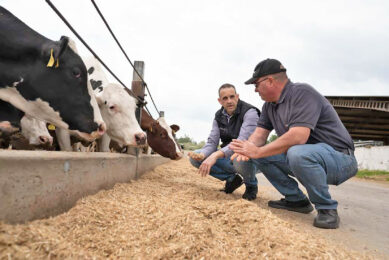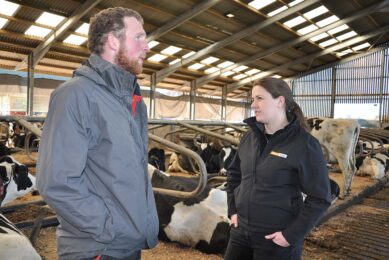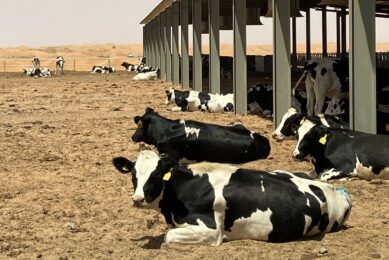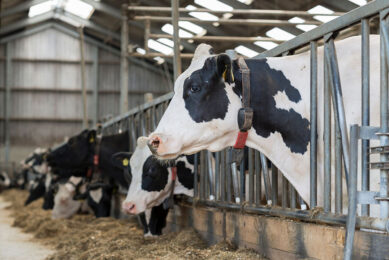The challenge of protein nutrition in dairy cows
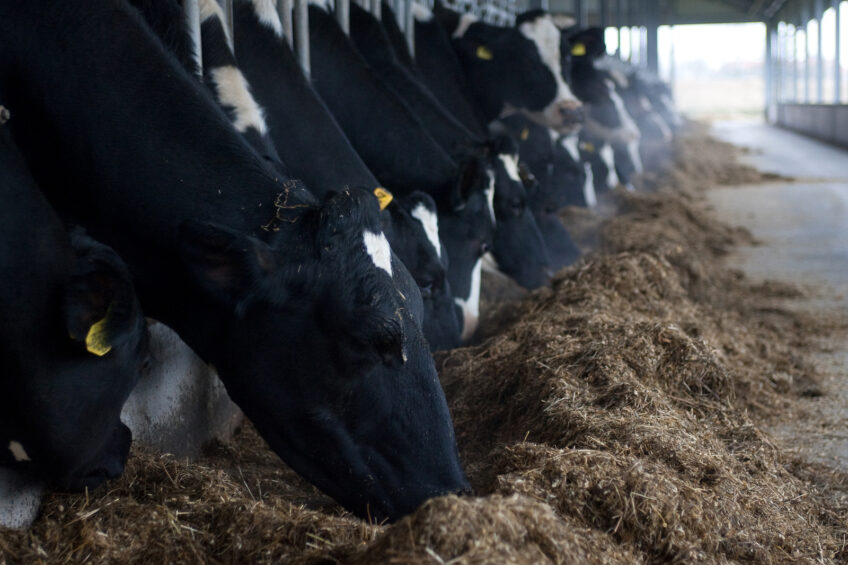
For years, at great cost, dairy cows have been overfed crude protein in an attempt to meet amino acid requirements for desired milk yield. Most important aspect in increasing feed efficiency is to use the rumen of dairy cows to its full potential and thus support the activity and growth of the rumen microflora.
The whole animal production industry is currently facing an enormous challenge: according to the United Nations, the world population is set to exceed 9 billion in 2050, 35% greater than today. As the majority of this growth will take place in developing countries, it will have a substantial influence on animal production since the world increases in consumption of meat, eggs and milk is currently occurring in Asia. This is due to rising incomes and urbanisation, which drives consumers to insist on more variety and choice in their diets. In particular, 70% of the total world population in 2050 will be accounted for in urban areas, an increase from 49% currently; with demand for dairy products being more important urban compared with rural areas. This means that world dairy production must increase significantly to meet this demand. Producing enough food to meet this demand in a sustainable manner is going to be challenging as available aarable land is limited so feed efficiency of livestock will become a major driver.
In addition to the production challenge, current economic variables are also driving dairy farmers to look more closely at production costs. The dairy industry is at the mercy of fluctuations in global milk prices. Higher input costs and falling milk prices all combine with existing challenges to negatively affect the profitability of any dairy enterprise. As feed prices currently represent around 60% of the total cost of milk production, dairy farmers need to ensure they include feed efficiency monitoring as a key parameter in their management strategy.
Support the rumen
There are several elements to increasing feed efficiency but one of the most important is to use the rumen of dairy cows to its full potential, supporting the activity and growth of the rumen microflora enabling dietary nutrients to be extracted from the diet as efficiently as possible. Nutrients need to be provided to the rumen microflora that are well-balanced in terms of fermentable energy and protein supply. Fermentable protein nutrition has to be specifically adapted to maximise rumen microbial population activity and growth, as the different populations have different requirements in term of how nitrogen is supplied. For instance, cellulolytic bacteria have optimal activity and growth when nitrogen is supplied as non-protein nitrogen or ammonia, while amylolytic bacteria require short peptides and amino-acids to reach maximal growth and activity. However, milk production isn’t simply connected to rumen degradable protein supply, as it is primarily a function of digestible protein supply in the intestine. Not only the quantity, but also the quality of these digestible proteins is of tremendous importance. In particular, amino acid profile and quantity have a direct impact on how efficiently they are used for milk production.
Poor efficiency
For years, dairy nutritionists have overfed crude protein in an attempt to meet the amino acid requirements for the desired milk yield. Beside the significant increase in input costs, this also results in poor nitrogen efficiency and, subsequently, higher nitrogen excretion which is obviously detrimental for the environment. The dairy cow inherently suffers from this poor nitrogen efficiency since excessive nitrogen is converted first into ammonia and then into urea, which is partially recycled but the vast majority is excreted. There is ultimately an energy loss associated with this process due to the detoxification of ammonia into urea.
This energy cost comes at the expense of milk production and other biological functions, such as reproductive performance. The energy required to excrete excess nitrogen is equivalent to up to 2kg of milk and can lead to body condition loss, increased blood and milk urea levels and subsequently, issues with reproductive performance.
  The increased diet digestibility, clearly visualised by lower undigested particles presence in the manure has a positive effect on the energy available to the animal. Left is with Rumagen- Right is before Rumagen. |
Unique protein source
Recently, research and development carried out by Alltech discovered a unique protein source that helps address the challenge of efficient protein nutrition for dairy cows. Rumagen™ is unique in that it combines a slow-release nitrogen source with a high nutritional value protein source. The slow-release source ensures a steady supply to the rumen cellulolytic microflora while the high nutritional value source is designed to provide protein for amylolytic bacteria. Rumagen also supplies the ideal protein to the liquid phase of the rumen.
Rumagen also provides an element of essential by-pass amino acids that have an optimal profile for milk production. This makes Rumagen an ideal protein supply for 100% of the rumen microflora population. Rumagen is indeed an enhanced true protein source due to its 86% rumen degradable protein and 14% bypass protein, with a safe non-protein nitrogen supply.
When included in dairy cow diets, Rumagen helps meet the requirement of the rumen microbes for optimal growth and activity, while increasing the production of microbial proteins in the rumen and allowing maximal diet digestibility. It also increases the fermentation rate in the rumen liquid phase. Its by-pass fraction contains a unique mix of essential amino acids that have a very similar profile to microbial protein, which is beneficial for efficient milk synthesis.
 |
Energy sparing effect
Being able to feed a more suitable protein source reduces the need to overfeed dietary crude protein and results in an energy sparing effect, beneficial for the lactating dairy cow. When applied to practical farm situations, Rumagen typically allows dairy nutritionists to supply lower dietary crude protein by up to 2% of dry matter and reformulate more balanced diets. The dietary inclusion of Rumagen has shown to increase milk production by approximately 2 litres a day while reducing dietary crude protein by up to 2% (Table 1). These results demonstrate a positive impact on the dietary nitrogen efficiency. In one farm trial, nitrogen efficiency was increased from 29.5% (already a very high level) to 33.5%. In most cases, Rumagen introduction into the diet was associated with a reduced milk urea nitrogen level (levels above 160 mg/l of milk are known to negatively affect days to first service).
In conclusion, there are clear opportunities to improve diet performance by adopting innovative technologies, such as Rumagen. Such technologies are key to helping the dairy industry meet current challenges.



